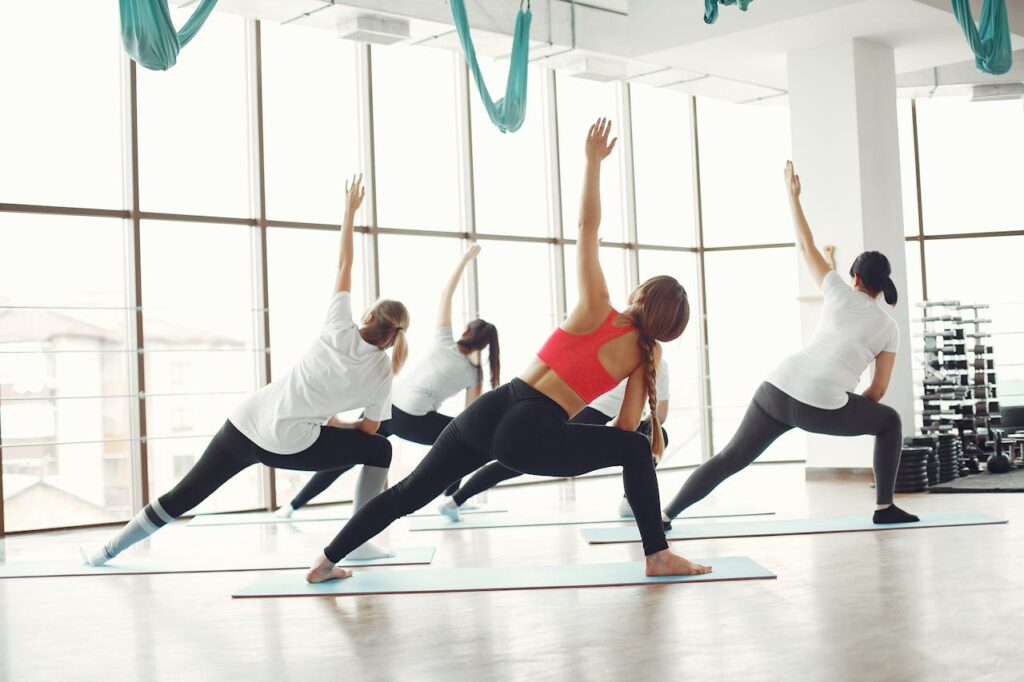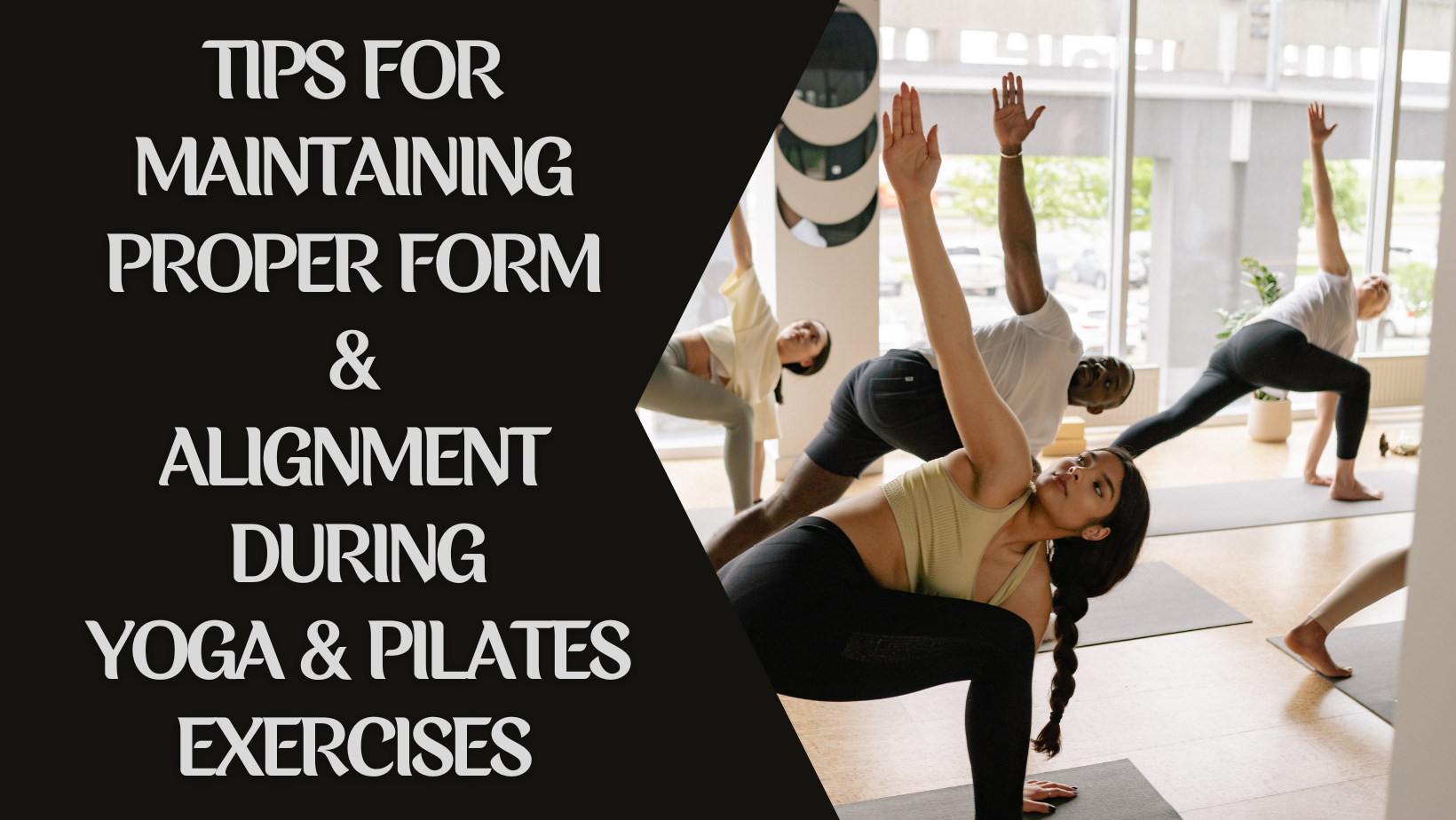Are you looking to improve your form and alignment during your yoga and Pilates exercises? Look no further! In this article, we will provide you with some valuable tips to help you maintain proper form and alignment throughout your practice. Whether you’re a beginner or an experienced practitioner, these simple yet effective suggestions will ensure that you get the most out of your workouts and prevent any potential injuries. So, grab your mat, find your center, and let’s get started on enhancing your mind-body connection.
What are some tips for maintaining proper form and alignment during yoga and Pilates exercises?
Yoga and Pilates are both incredibly beneficial for the body and mind, but it’s important to practice them with proper form and alignment to prevent injuries and get the most out of your practice. Here are some tips to help you maintain proper form and alignment during your yoga and Pilates exercises:
Importance of Proper Form and Alignment
Proper form and alignment are essential in yoga and Pilates because they ensure that you are engaging the right muscles and avoiding unnecessary strain on your joints. When you maintain proper form, you can deepen your practice and reap the full benefits of each pose or exercise. It also helps to prevent injuries and promotes better posture both on and off the mat.
Understanding Body Awareness
One of the keys to maintaining proper form and alignment is developing body awareness. Body awareness refers to the ability to understand and feel how your body is positioned in space. It involves being mindful of your body’s alignment, muscle engagement, and any sensations or imbalances you may feel during your practice. Developing body awareness takes time and practice, but it’s an important skill to cultivate for a safe and effective yoga and Pilates practice.
Breathing Techniques
Proper breathing techniques play a crucial role in maintaining proper form and alignment during yoga and Pilates exercises. Deep, diaphragmatic breathing helps to activate the core muscles, stabilize the spine, and promote relaxation. It’s important to focus on your breath throughout your practice, inhaling deeply through your nose and exhaling fully through your mouth. Paying attention to your breath not only helps with alignment but also helps to bring a sense of calm and focus to your practice.
Building Core Strength
A strong core is a foundation for maintaining proper form and alignment in yoga and Pilates exercises. Engaging your core muscles helps to stabilize your spine and pelvis, preventing unnecessary strain and ensuring proper alignment. To build core strength, incorporate exercises that specifically target the abdominal muscles, such as planks, boat pose, and Pilates roll-ups. By strengthening your core, you’ll be able to maintain proper form and alignment more easily in various poses and exercises.
Engaging the Glutes
Proper alignment in yoga and Pilates exercises also involves engaging the gluteal muscles. The glutes play a crucial role in stabilizing the pelvis and supporting the lower back. When the glutes are weak or inactive, it can lead to poor posture and improper alignment. To engage the glutes, focus on squeezing and activating the muscles of your buttocks during relevant exercises, such as bridge pose or Pilates leg lifts. By strengthening and engaging your glutes, you’ll be able to maintain better form and alignment throughout your practice.
Alignment of the Spine
The alignment of the spine is vital in yoga and Pilates exercises as it affects the entire body’s alignment. In both practices, it’s important to keep a neutral spine, which means maintaining the natural curves of the spine without excessive rounding or arching. To achieve proper spinal alignment, imagine a straight line extending from the crown of your head to your tailbone. Avoid collapsing the chest or hunching the shoulders forward, and instead, focus on elongating the spine and keeping it in a neutral position.
Proper Positioning of the Shoulders
Along with the spine, the proper positioning of the shoulders is crucial for maintaining proper form and alignment. In yoga and Pilates exercises, it’s essential to avoid rounding or hunching the shoulders, as this can strain the neck and upper back. Instead, draw the shoulder blades down and back, allowing the chest to open. Imagine sliding your shoulder blades towards each other and gently lengthening the back of the neck. By maintaining proper shoulder positioning, you’ll optimize your alignment and prevent discomfort or injury.
Aligning the Hips
The alignment of the hips plays a significant role in maintaining proper form and alignment during yoga and Pilates exercises. Properly aligned hips help to stabilize the pelvis, spine, and lower body. To align your hips, make sure they are level and facing forward in standing poses. In seated or supine poses, avoid collapsing one hip or sitting asymmetrically. Engaging the muscles around the hips, such as the glutes and hip flexors, can also help to promote proper alignment and stability.
Understanding Knee Alignment
Proper knee alignment is crucial in yoga and Pilates exercises to prevent strain or injury to the knee joint. In standing poses, make sure your knees are aligned with your toes, and avoid letting them collapse inward or push too far forward. Engage the muscles of your thighs, specifically the quadriceps, to support the knees. In seated or supine poses, ensure your knees are facing straight up to the ceiling, without twisting or rotating inward. By maintaining proper knee alignment, you’ll protect the joint and maintain proper form throughout your practice.

Foot Placement and Alignment
Foot placement and alignment are often overlooked but important aspects of maintaining proper form in yoga and Pilates exercises. In standing poses, distribute your weight evenly between your feet, keeping them parallel and hip-width apart. Avoid rolling onto the inside or outside edges of your feet, as this can disrupt your alignment and stability. Engage the muscles of your feet and ankles, and spread your toes wide to create a solid foundation. By paying attention to your foot placement and alignment, you’ll maintain stability and prevent misalignment in your practice.
You May Also Like
Maintaining Proper Wrist Alignment
Proper wrist alignment is crucial when performing weight-bearing exercises in yoga and Pilates, such as plank pose, downward dog, or push-ups. To maintain proper alignment, make sure your wrists are stacked directly under your shoulders. Avoid collapsing or hyperextending the wrists, as this can put unnecessary strain on the joints. Distribute your weight evenly through your palms and fingers, and press firmly into the ground to engage the muscles of your arms and shoulders. By maintaining proper wrist alignment, you’ll protect your wrists and maintain proper form and alignment in your practice.
Alignment of the Neck and Head
Lastly, the alignment of the neck and head is important for maintaining proper form and alignment during yoga and Pilates exercises. Avoid straining or overly tilting the head forward or backward. Instead, imagine the crown of your head lifting towards the ceiling, lengthening your neck. Align your ears with your shoulders, and avoid letting the chin jut forward or tuck too far in. By maintaining proper alignment of the neck and head, you’ll prevent unnecessary tension and strain in the upper body, allowing for better alignment throughout your practice.
In conclusion, maintaining proper form and alignment is essential for a safe and effective yoga and Pilates practice. Develop body awareness, focus on proper breathing techniques, and build core strength to support your alignment. Engaging the glutes, aligning the spine, shoulders, hips, knees, and feet, as well as maintaining proper wrist and neck alignment, are all crucial aspects of ensuring proper form and alignment. By following these tips and practicing mindfully, you’ll enhance your practice, prevent injuries, and maximize the benefits of yoga and Pilates. Remember, proper form and alignment not only improve your physical practice but also carry over to your daily life, promoting better posture and overall well-being.




